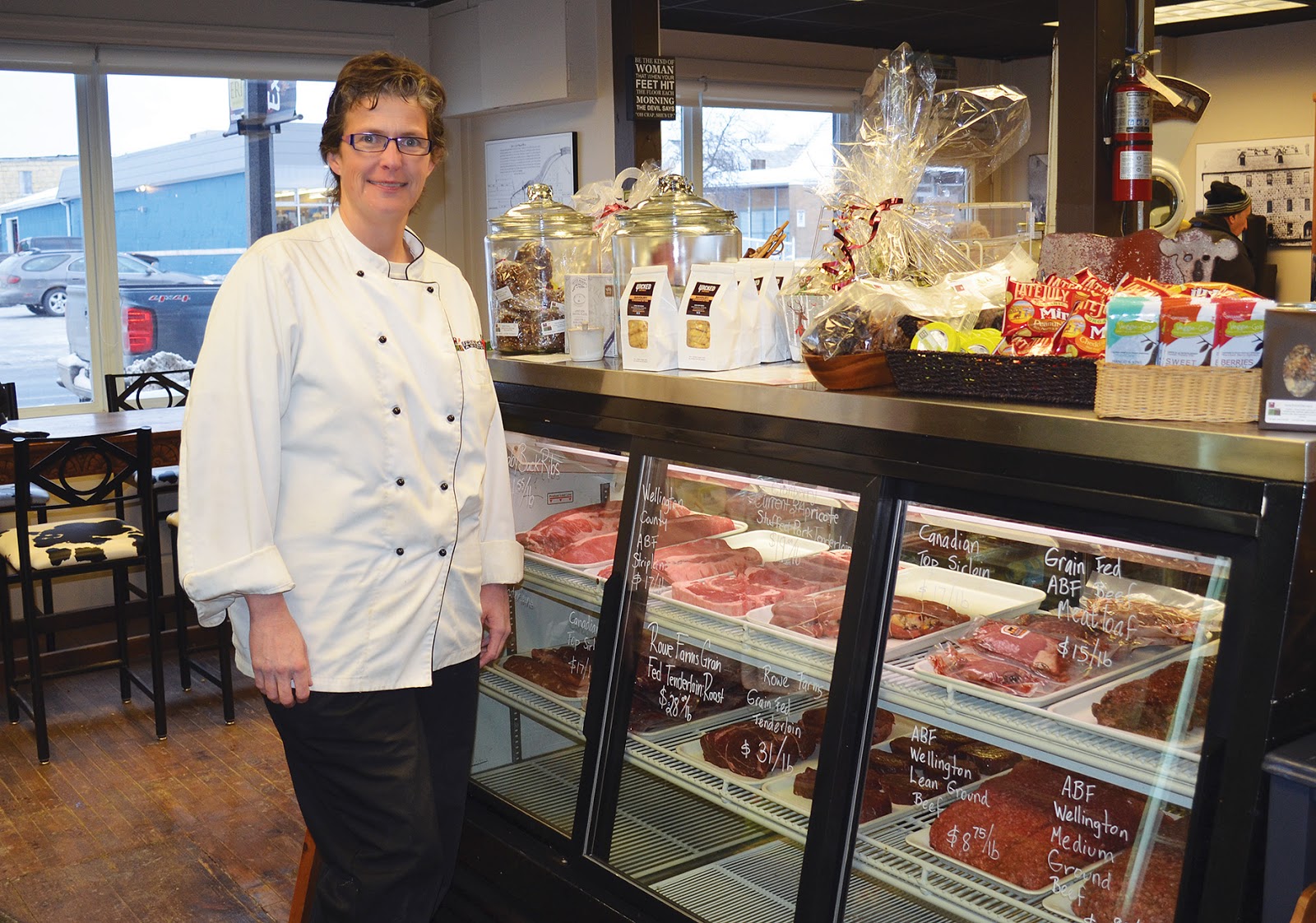As published in The Erin Advocate
The Steen’s brand of milk products is no longer available on store shelves, but local consumers still have many choices – including Jersey milk from Miller’s Dairy in Creemore, sold in returnable one-quart glass bottles.
Fred Steen started Steen’s Dairy in 1944. It became a major independent brand in Southern Ontario, with the Steen’s Dairy Bar known as an icon of Erin village. Unable to expand at its downtown location, it formed a partnership with the Organic Meadow farmers’ co-op, and in 2010 shifted production to a new plant in Guelph.
“Organic Meadow has been proud to partner with Steen’s Dairy to offer consumers access to both organic (Organic Meadow) and local (Steen’s) dairy offerings,” said Michelle Schmidt, Marketing Manager at Organic Meadow.
“Last year, we made some strategic changes to our business, specifically the elimination of our in-house distribution service, that we had used to primarily service local customers carrying the Steen’s brand. And so while Steen’s dairy products continue to be available (primarily through food service channels), by and large, they are no longer readily accessible on retail store shelves.”
Erin outlets do not appear to be carrying any Organic Meadow milk, but shoppers still have a variety of options. The Beatrice brand is available at some convenience stores, along with Lactancia, while Valu-Mart carries mainly the Neilson brand, with a small quantity of PC Organics.
 Foodland in Hillsburgh sells Sealtest and Natrel, but in December after Steen’s was discontinued, they brought in Miller’s milk. That dairy uses bottles that only people of a certain age will remember – one-quart returnable glass, now with a refundable deposit of $2.00. The company also distributes half-gallon glass bottles to some outlets.
Foodland in Hillsburgh sells Sealtest and Natrel, but in December after Steen’s was discontinued, they brought in Miller’s milk. That dairy uses bottles that only people of a certain age will remember – one-quart returnable glass, now with a refundable deposit of $2.00. The company also distributes half-gallon glass bottles to some outlets.“The reaction of people has been very good,” said Foodland owner Mary McArthur. “It’s more of a country item.”
At $3.19 plus deposit for 946 ml, it won’t be practical or economical for families that consume lots of milk. But for low volume households, it creates a new option in a marketplace that for many decades has been quite homogenized.
Since 1965, under the milk system organized by the Dairy Farmers of Ontario, milk from various farms is routinely pooled for efficient processing and marketed under major labels. Organic milk and other specialties are kept separate.
More than 90% of milk is from Holstein cows, with only 4% from Jersey cows. Now the industry is encouraging on-farm microdairies, partly due to consumer demand for local food, enabling Millers to offer pure Jersey milk. It comes from a purebred Jersey herd of 120 milking cows that has been tended at the same farm, by the same family, for 50 years.
“People want to know where their food comes from and we want to make that personal connection,” says the Miller family on their website.
After buying a bottle of Jersey milk, I did an informal taste test. The new milk tasted slightly different from regular milk, but was quite satisfying. It had a richer feel, even though it comes with the standard butterfat content levels – skim, 2%, whole (about 3.25%), 10% cream (half & half) and 35% whipping cream.
All the feed for the Miller herd is grown on the farm where they live. The milk is pasteurized, but not advertised as organic. The glass bottles keep it extra cold, naturally slowing down its aging process.
According to the American Jersey Cattle Association, Jerseys have a 20% lower carbon footprint, and their milk offers higher nutritional value, providing 15-20% more protein, 15-18% more calcium, 10-12% more phosphorus and higher levels of vitamin B12, compared to most milk on the market.


